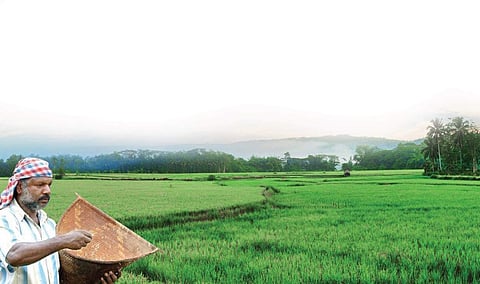

ALAPPUZHA: The state is set to witness a mass replacement of paddy seeds after a genetic change appeared in the Uma, a high-yielding seed variety being used in the state since 2000.
The Kerala Agricultural University and the Agriculture Department has started replacing Uma with Shreyas. The production of seeds started in the model farms of the Agriculture Department and Kerala State Seed Development Authority.
Reena Mathew, professor at the Rice Research Station (RRS) in Mankombu said, “The Uma variety is vulnerable to various pest attacks and it has been causing losses in paddy cultivation in the last few seasons. So we have started to spread the new variety of paddy developed in the station.”The Shreyas is more resistant, with a yield comparatively higher than the Uma and with the growing period decreased by five days. The seed was developed from parent varieties Pavithra and Thriguna by scientists Leena Kumari and Devika in 2015, said Reena.
The Uma was also developed in the station in 1998 and its use was started extensively in 2000. In the decade and half since then, the seed was being used in more than 80 per cent of the paddy fields in Kerala and in other states, including Karnataka and Tamil Nadu.
We started to think about a new variety after the Uma paddy started to show signs of easily vulnerable to diseases,” said Reena. “A disease, false smut’ (Lakshmi ), widely appeared in the state in 2012-14 and the production of paddy reduced drastically during the period.”
The content of black-coloured rice was also high in the rice after processing. Another pest, gall fly (goleecha), also widely affected the paddy cultivation. The studies curried out in the RRS found the resistance of the Uma had decreased, causing pest attacks, said Reena.
Till 1998, the farmers of the state grew a variety named Jyothi, also developed in the station.
When this showed symptoms of pest attack, it was replaced with Uma.
Reena said, the quality of Shreyas is better than Uma. However, the rice flour from Uma is better.
At full growth, the Shreyas is taller than the Uma, so the chance of stalks of paddy bending and breaking off is higher, so the RRS is advising farmers to use manure with lesser quantities of nitrogen content.
Why Shreyas?
Shreyas has given the same yield as that of Uma; the former has been found to be less susceptible to ‘false smut disease’, which results in discolouration and up to 20 per cent damage to the crop. Uma yields 8 to 9 tonnes of paddy per hectare.